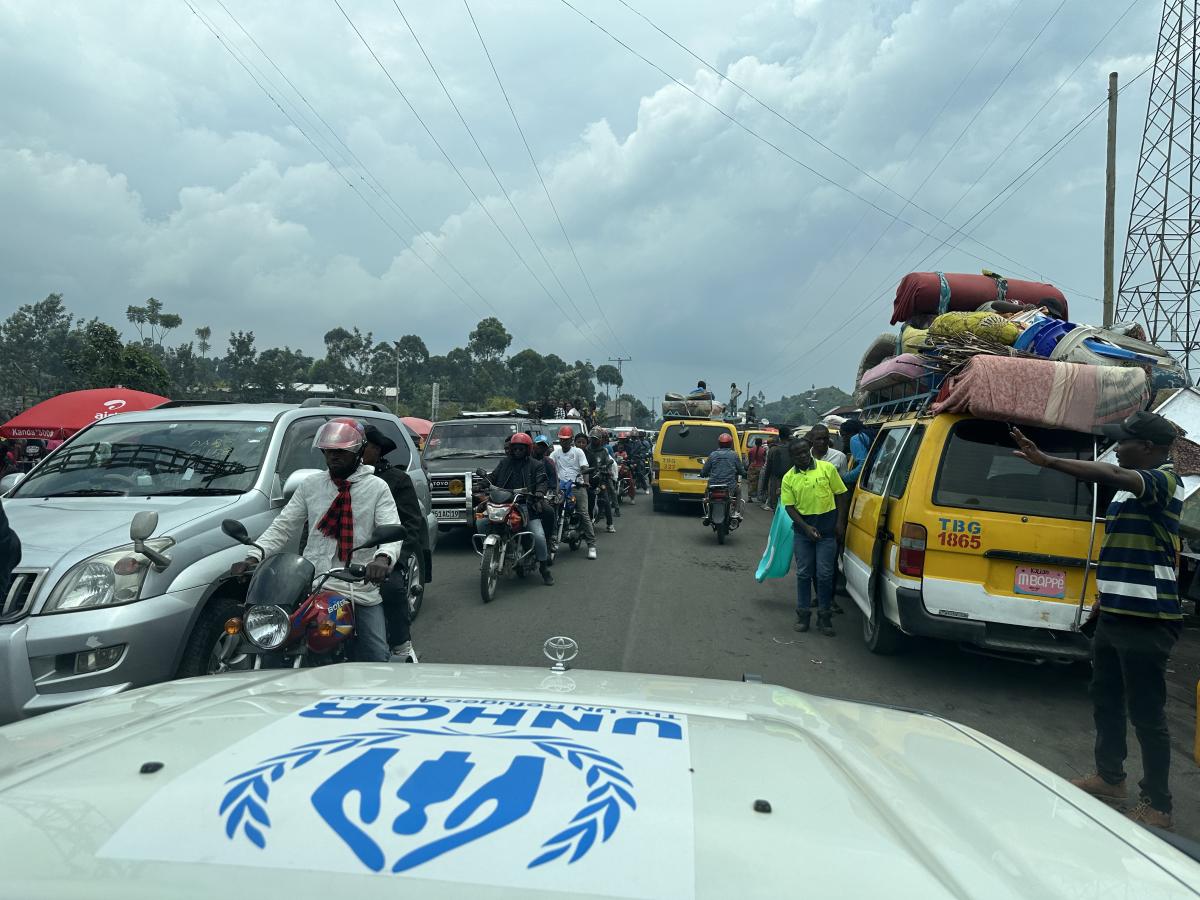UNHCR is very concerned about the situation of refugees in the Democratic Republic of Congo. At the beginning of February, heavy fighting broke out in the town of Sake in the province of North Kivu in the east of the African country: The Congolese army and armed groups of the March 23 Movement (M23) fought each other. According to estimates, this drove 144,000 people to flee towards the provincial capital of Goma, where there are already half a million internally displaced persons.
Uncertain situation causes concern
The situation in Sake has since calmed down again, but the peace is unstable: the M23 continues to control one of the two roads leading out of Goma and towards the north-west. The violence is taking place at a time when the UN peacekeeping mission in Congo, MONUSCO, is withdrawing after more than 20 years in the country. The blue helmets want to have left the DR Congo completely by April. In addition, the Congolese Prime Minister Jean-Michel Sama Lukonde announced his resignation at the end of February, which could lead to further uncertainty.
In total, there are now almost 7 million internally displaced persons in the DR Congo. In addition, there are 523,000 refugees who have escaped the conflicts in neighboring countries such as the Central African Republic, Rwanda, Burundi and South Sudan. Almost three quarters of them live in refugee camps or settlements outside the cities.

Around 670 million dollars requested for refugees
On February 22, UNHCR published the Regional Refugee Response Plan (RRP) 2024-2025 for the Democratic Republic of the Congo. In it, the UN refugee agency expects 1.9 million refugees from the DR Congo this year and calls for USD 668.3 million to support these people and their host communities. Meanwhile, the Congolese government and its humanitarian partners are asking for USD 2.6 billion to respond to the humanitarian crisis in the country: More than 25 million people are estimated to be at risk of famine.
Violent conflicts have been causing suffering and chaos in the Democratic Republic of Congo for decades. Last year, devastating floods in the east of the country exacerbated the difficult situation for the population. Around 100,000 houses and many schools and health facilities were destroyed. Since then, 2 million people, 60 percent of them children, have been dependent on aid.
More information on the situation in the Democratic Republic of Congo
February 23: Briefing Note - UN Refugee Agency expresses alarm over escalating humanitarian crisis in eastern DR Congo
You too can help the people displaced by conflict in the DRC.
UNHCR can help these displaced people to get a roof over their heads, food, medical care and support them in building a new, dignified life.